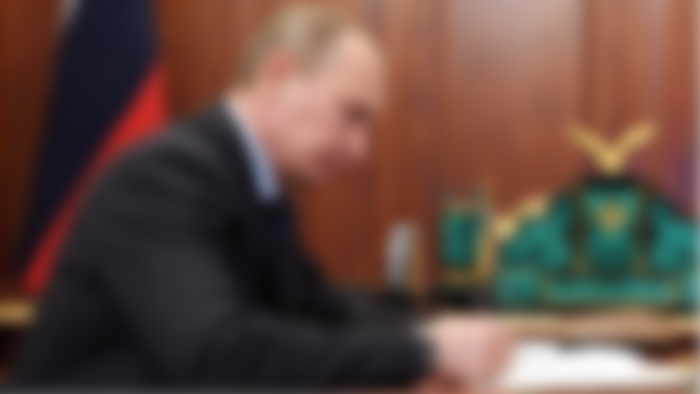What does Russia's capture of Mariupol mean and why is it important?

The siege of Mariupol began on February 24, 2022, right at the start of Russia’s invasion of Ukraine. Within two weeks, Russian forces had completely sealed the city. And within two months, what was left of the Ukrainian military had retreated to an old iron and steel works building. Surprisingly, they held out for a while after that. Luckily for them, iron and steel plants are incredibly important for the war industry. That’s why industrial cities like Pittsburgh were on the main targeting lists for the Soviet Union back in the day. For the soldiers in Mariupol, this meant that the plant had bunkers designed to withstand nuclear attacks. But they could not hold out forever. On May 16, the siege ended. Mariupol had fallen to Russian forces. So why is this such a big deal? Why did Russia want it so badly? What does it tell us about what Putin wants out of this war? And what are the strategic risks for Russia?
Regarding the “why” question, the simple answer is that Russia’s seemingly bare minimum goal of the invasion is to secure the two separatist regions in Eastern Ukraine. These self-proclaimed republics have been fighting the central Ukrainian government since 2014, and all intelligence reports indicate that they receive substantial support from irregular Russian forces. At the start of the current war, the Donetsk separatists held relatively little control over of the corresponding oblast. But one of the first things Russia did in the Eastern front at the start of the war was to head straight to Mariupol. This wasn’t the first time Mariupol had been a battle site. In the aftermath of the Maidan Revolution in 2014, separatists held the city for a little more than a month before government forces retook it. Eight years later, Mariupol has flipped once again.

However, it is telling how Russia’s main push has been in the southern part of the oblast. It has not yet made a real push northwestward within the region. If the conflict was primarily about establishing full independence for the separatist regions, you would think Putin would be pointing the troops the other way. To make some sense of this, we need to head further south to Crimea, which Russia completely annexed in 2014. Unlike the separatist regions, Ukraine has avoided an active war over the last eight years there. But that does not mean it has been free of issues. Crimea is a peninsula that juts out of Ukraine, not Russia. Thus, for all Russian intents and purposes, Crimea was essentially an island territory at the start of the war. And that made administering it a mess.
Ukraine has tried to lock down the territory since Russia annexed it. Among other things, that has meant damming the North Crimea Canal. This was a vital water source for Crimea’s huge agricultural sector. Without that water, the fields dried up. Instead, Crimea has had to rely on Russian imports for their basic necessities. This wasn’t easy. Between 2014 and 2018, traffic coming in and out of Russia had to go via ferry. Recognizing the impracticality of this over the long-term, Russia started building the Crimean Bridge in 2016. It opened for cars and trucks two years later, replacing the ferry as the main method of travel between the two areas. A parallel rail bridge opened one year after that. But that’s still a lot of pressure.

It’s only a pair of bridges to handle a population of 2.4 million people, and they need to import tons of supplies to keep everyone there were afloat. As such, if Russia were interested in expanding its borders, taking the southeastern strip of Ukraine is a sensible place to start. And that’s where the main focus of the campaign has been for troops coming out of the Crimean Peninsula. After that the attack on Kyiv failed to produce anything fruitful, it’s now where Russia has made the most substantial gains since the war began. This is where Mariupol comes into the picture. It seals the land bridge going from Russia to Crimea. And as long as Russia can defend it, it can resupply Crimea from a second pathway.
That said, in my opinion, what we have discussed so far are the less interesting aspects of what has happened with Mariupol. It’s not just that Russia wanted to capture it. It’s that they “captured” it with air quotes. You see, historically speaking, when one country occupies another, usually they aim to keep the local industry going. After all, if you blow up the entire economy, there is nothing left for you to extract. That makes it hard to turn a profit on your efforts. This goes double if the plan is not to build extractive regimes at all, as was the case with the United States and the Iraq War. The process may not be easy, but—at least in theory—a conquering state can make substantial gains from their efforts.

Heading into the war, Russia had signaled an intent to integrate Ukraine into a greater Russia, reminiscent of Soviet expansionist times. On July 12, 2021, Putin published an essay that outlined much of what was to come the following year. Titled “On the Historical Unity of Russians and Ukrainians”, he argued that the two peoples actually come from a common heritage. “Our spiritual, human and civilizational ties formed for centuries and have their origins in the same sources…. Together we have always been and will be many times stronger and more successful. For we are one people…. Russia has never been and will never be “anti-Ukraine”.”
Given that rhetoric, one might have expected a cautious invasion, the preservation of local economies, and a soft power fight over which central state each locality would want to be a part of. But Mariupol was not that at all. It is estimated that more than 90% of the buildings in the city have been destroyed. Mariupol, formerly with a population of 430,000, essentially has ceased to exist. This is hardly consistent with trying to unite the two countries. Instead, the complete destruction of Mariupol means that continuing to fight over the region no longer looks as attractive to Ukraine. It’s just not there anymore. That makes the land bridge to Crimea more secure, which makes the nature of the operation more consistent with that strategic goal.

And as another bonus, it completely encircles the Sea of Azov. Beyond the strategic benefit of controlling the waterway, it just so happens that there are oil and natural gas deposits down there They might not be the easiest deposits in the world to extract, but that may also not be necessary. Simply denying access to them and the others in the country means that Ukraine cannot compete with Russia on the European energy market. This preserves higher prices for Moscow. The irony of this, of course, is that the war itself forced Russia to start selling its gas at a discount, as some companies began to refuse doing business with them.




